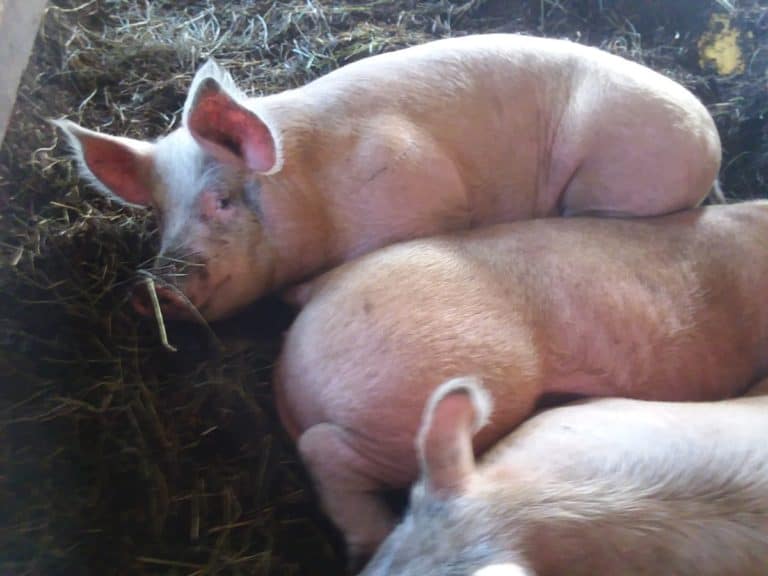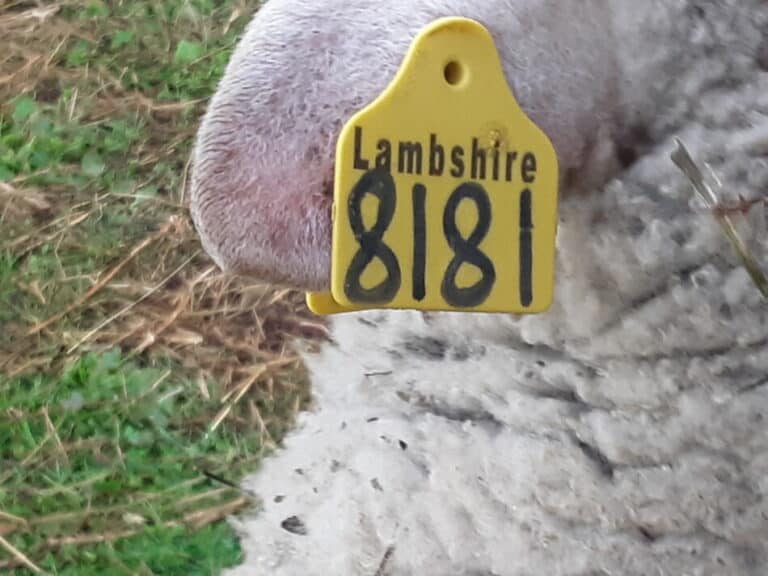What Is 2nd Cutting Hay?

For the new livestock owner, shopping for hay can be confusing, there are a lot of options.
One of the types of hay that comes up pretty frequently is second cutting. What is second cutting hay?
Second cutting hay is the hay made from the second harvest of a hay field.
Second cutting hay is a popular choice for any animal that needs a higher quality hay, for instance fast growing young stock or nursing moms.
Alfalfa, orchard grass, clover, timothy and mixed grasses are all hay plants that would have a second cutting of hay.
7 Tips To Pick Out High Quality Hay will give you a checklist of specific things to look for in the hay you are considering purchasing.
2nd cutting hay is the 2nd hay crop from that field for the year
Second cutting hay is a very descriptive name, which means exactly what it says, hay from the second cutting of a field in a year.
Second cutting could be alfalfa, orchard grass, clover or any number of forage plant mixes.
Most forages used for hay would be perennials, so they regrow again and again throughout the year, just like your lawn.
If you need help figuring out how much hay your animals will need, read How Many Bales Will My Sheep Need? (Even if you don’t have sheep, the basic math is done the same for all hay eaters!)
Not all forages will regrow for a second cutting
A plant that does not regrow after being cut, like oats, will not make a second cutting.
Oat hay, along with most other small grain forages harvested for hay, will be first cutting only.
To learn more about first cutting hay, read What Is First Cutting Hay?
Second cutting hay is not a specific plant
The potential confusion about second cutting is that second cutting hay is not a specific forage.
Most plants used for hay will regrow after the first harvest, which produces a second crop of hay called the second cutting.
Second cutting hay is high quality
Second cutting hay is much more likely to be of high quality than first cutting hay. Why? It’s all about timing, specifically the weather.
First cutting hay is generally harvested in a less predictable time of year, rain wise. It’s tough to get hay dry in the spring.
However, by the time second cutting is ready to harvest the weather is usually a bit more predictable, so it’s easier to get great hay made.
A field that has perfect growing and harvesting conditions for both first and second cutting hay should produce two great cuttings of hay.
Notice the word perfect, which is not how things usually go, especially when you are thinking of weather forecasts!
Second cutting from a field is smaller than the first cutting
An interesting thing about second cutting hay is that is makes less bales per field than the first cutting did.
At first that doesn’t make sense, it’s the same field. Why aren’t all cuttings of hay producing the same amount of bales?
Second cutting hay is grown in warmer weather with longer days, this changes how the plants grow.
In the longer days the forages start to mature at a younger age than in the shorter days of early summer, when first cutting is made.
Maturing (starting to flower), at a younger age means finer stems and less overall volume, since each plant is younger (smaller) when it needs to be cut.
Second cutting hay is worth more
Second cutting hay is likely to be worth more to you the livestock owner, than first cutting hay.
Simply because it is easier to get made at the perfect maturation stage which gives you more feeding value for your dollar.
Evaluating Hay Quality is a Maryland Extension Cooperative article with an interesting way to compare the feeding value of different maturities of hay.
| Quality | Time Cut | Description | Value |
| Excellent | Very early | Leafy, bright green | 1.2 |
| Good | Early | Leafy, green | 1.0 |
| Fair | Medium to late | No excessive leaf loss | 0.8 |
| Poor | Late | Coarse, stemmy | 0.6 |
This is a very interesting table that I found. Let’s work through some examples to see what this table means to you and your wallet!
Let’s say you have the option to buy a ton of a fair quality second cutting hay for $180 or a ton of excellent quality second cutting hay for $210.
Which one should you buy?
Spoiler alert: the more expensive, yet higher quality hay is a deal.
If you enjoy going “into the weeds” and figuring out the math, here’s how to do these calculations for yourself:
Use the chart to compare hay costs
How can you determine the appropriate amount to spend on each, since they are not the same as far as use to your animals?
We need to figure out a nutritional value of the hay and calculate how much different the prices are based on the value your animals get from the hay.
Simply put, which hay is getting you more for your money?
| Hay | Price per ton | Cost for equal nutritional value |
| Fair quality | $180 | $216 to get equal nutrition |
| Excellent quality | $210 | $168 to get equal nutrition |
In terms of nutritional value for your money, the more expensive hay is actually a much better purchase.
Calculate the nutritional value of the fair quality hay
For the ton of fair quality second cutting hay:
$180 divided by 2,000=9 cents per pound for this hay
Since this is only fair quality hay we need to use the value multiplier of 0.8 to even out the nutrition for the money spent.
2,000 in a ton x 0.8 (from the chart) =1,600 pounds of good quality hay equivalent
We only have the equilvalnet of 1,600 pounds of hay, but need 2,000 pounds to make a ton, so we need to add another 400 pounds of hay to even this out.
400 pounds of hay x 9 cents per pound=$36 needed to be added to correct the per ton price based on nutrition
The fair quality hay would cost $216 ($180 + 36) per ton for the nutritional equivalent of good quality hay.
Calculate the nutritional value of the excellent quality hay
For the ton of excellent quality hay:
$210 divided by 2,000=10.5 cents per pound
Referring back to the hay quality chart, you’ll see the multiplier value for an excellent quality hay is 1.2.
2,000 x 1.2=2,400 pounds of good quality hay equivalent
Since this excellent quality hay is over one ton in good quality hay equivalent, we need to take off some of the price per ton!
400 pounds “over” x 10.5 =$42 over, this number comes off the price!
The excellent quality hay would cost $168 for the nutritional equivalent of good quality hay.
$210-$42= $168 per ton for the nutritional equivalent of good quality hay.
To sum it all up, the excellent quality hay is a much better use of your money, as far as nutritional value in the ton of hay.





